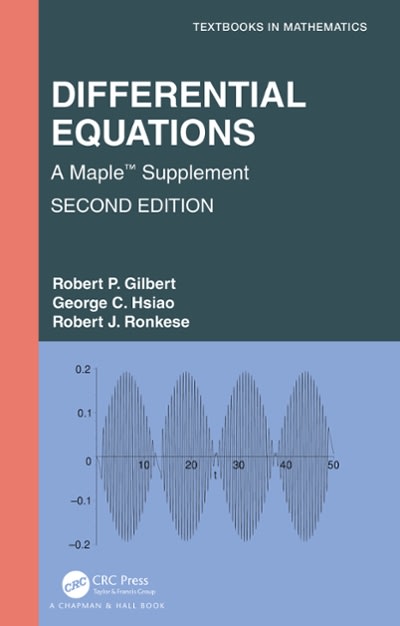Question
Binomial Probability Discussion Forum Instructions Each student must post (1) substantial initial post with a minimum of 300 words by Wednesday of each week before
Binomial Probability Discussion
Forum Instructions
Each student must post (1) substantial initial post with a minimum of 300 words by Wednesday of each week before 11:59 PM. All posts and replies must contain at least (2) professional references, one may be the course textbook, properly cited in the current APA format. Late discussion posts are not accepted in this course.
The student must also reply to at least (2) classmates using a minimum of 150 words per reply by Sunday before 11:59 PM All replies in the discussion forum should enhance the discussion. Non-informative messages posted in the discussion forum will not be counted towards the required number of replies for that topic.
Topic
Often times there are so many variables involved in a study that it is difficult to distinguish "causes". For example, there is the belief that "smoking causes lung cancer". I tend to believe this myself but my own mother was a chain smoker and never developed lung cancer. There are many other variables that might affect the outcome of lung cancer such as working conditions, heredity, diet, etc.
It is too hard to account for every "factor" in these circumstances so we might just focus on one such as studying lung cancer patients and asking them if they smoked or not.
In this discussion, you are going to come up with some example of the binomial probability distribution. Remember our definition:
Def: Binomial probability distribution
1. procedure has fixed # of trials
2. trials must be independent
3. each trial must have all outcomes classified into 2 categories
4. probabilities must remain constant for each trial
For example, we interview 50 lung cancer patients (fixed # of trials). They come from all occupations and parts of the state (independence). Either they smoked or did not smoke (2 categories). If 15% of the population smokes then the probability would remain constant for each trial equaling 15% or 0.15. This would meet the conditions for a binomial probability distribution.
Come up with your own examples of a binomial probability distribution. It can be made up, you do not need actual numbers.
Step by Step Solution
There are 3 Steps involved in it
Step: 1

Get Instant Access to Expert-Tailored Solutions
See step-by-step solutions with expert insights and AI powered tools for academic success
Step: 2

Step: 3

Ace Your Homework with AI
Get the answers you need in no time with our AI-driven, step-by-step assistance
Get Started


